HomeBioGas - Part 3 - Drip Irrigation Integration and 15 months of Operation
This post is the third in a series about our Home BioGas System which creates cooking gas and liquid
fertiliser from household organic waste.
Part 1: Installation of Home Biogas System
Part 2: Installation and operation of our Home BioGas System.
In this post I will provide a further update about how this system is enhancing our garden, reducing our energy costs and making our waste disposal easier.
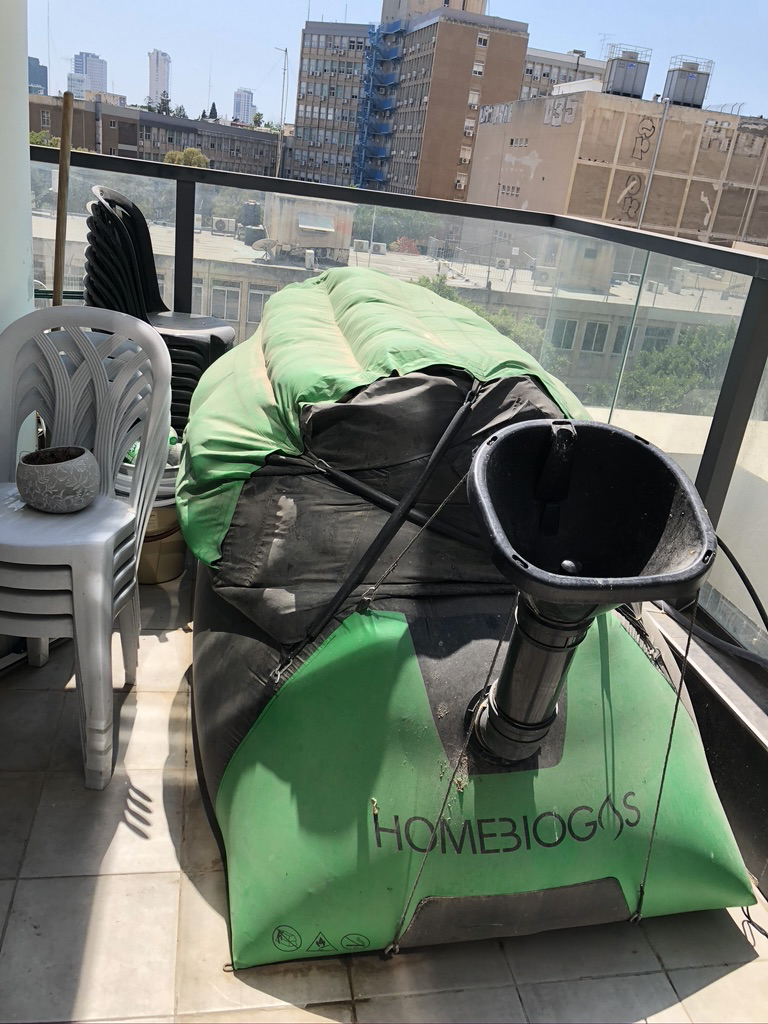
Background
About 5 years ago at a Water Technology exhibition in Tel Aviv I came across this amazing system that creates cooking gas and liquid fertilizer from household waste (all food scraps including meat, bones, oils etc).
It’s called Home BioGas and is from an Israeli startup company. https://www.homebiogas.com/
My version is a Home BioGas 2.0 and they now have a later version of it which is made from recycled materials and is even cheaper ($720).
In my last update from 9 months ago, I had the system up and running and was capturing the liquid fertiliser in a bucket, manually adding it 1:5 to water and hand watering the roots of my plants.
Automated drip irrigation with liquid fertiliser feed.
One of the things that really attracted me to the system was that liquid fertiliser could be incorporated in an automatic, drip irrigation system, unlike the solid fertiliser from compost that requires messy manual labour to use and maintain.
The first step was to ditch the bucket and get a sealed container with a tap and pipe to get the liquid fertiliser over to my drip irrigation system.
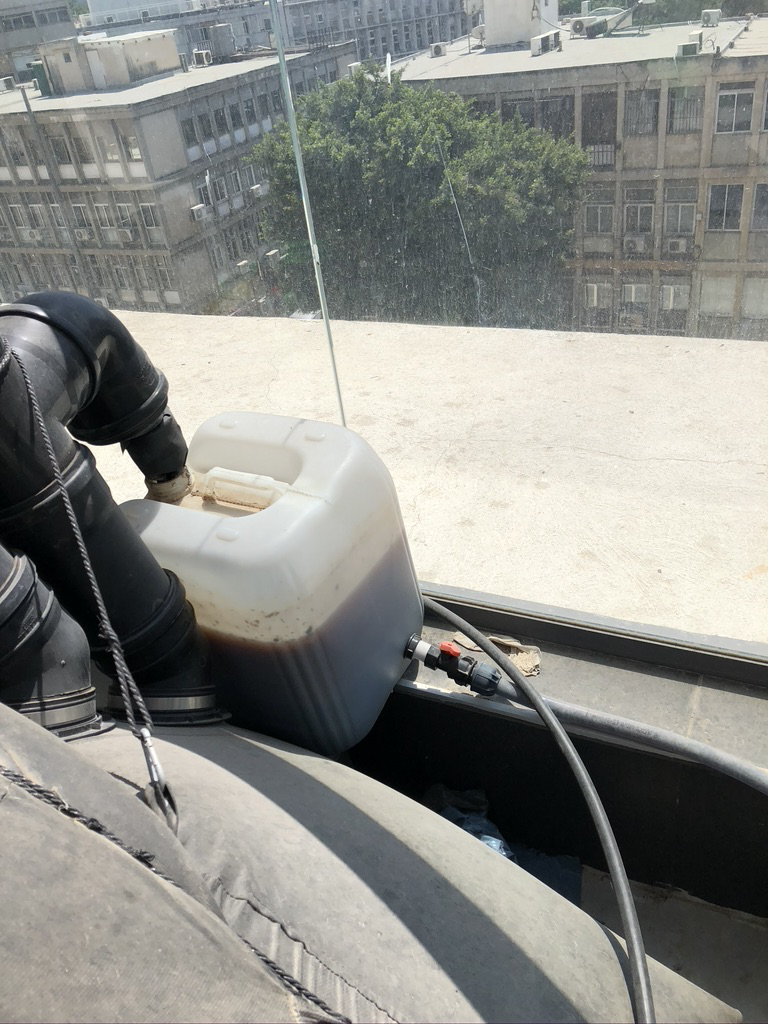
The second step was to come up with a solution to automatically feed the fertiliser in the correct 1:5 ratio into the water feed of the drip irrigation system. I had previously installed this system with a watering computer controllable by Bluetooth from an App on my phone.
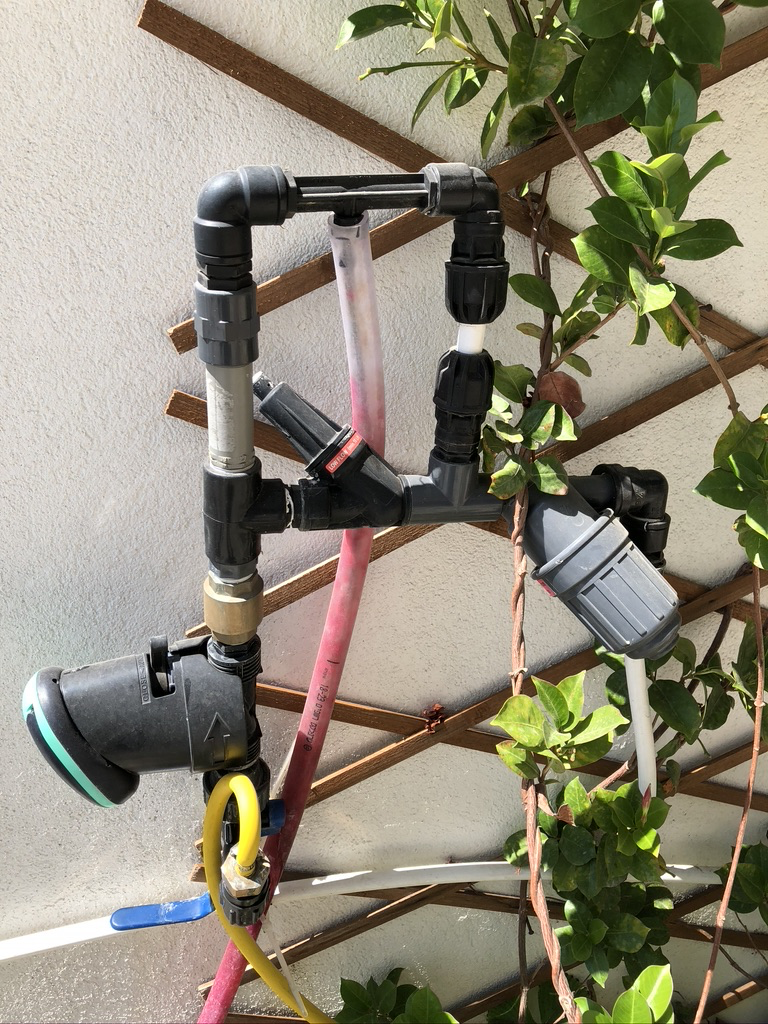
At first I looked at an expensive water powered fertiliser pump, as is used for shop bought liquid fertiliser.
But those pumps had a much lower ratio of fertiliser to water (1:50 - 1:100) because the shop bought liquid fertiliser is more concentrated.
I then discovered that a simple, cheap venturi system would provide the correct ratio as long as I could get the upstream and downstream pressures correct.
It took a while to get it right, adjusting flow rates of the irrigation drippers, the pressure on the low flow regulator and watering times, but I finally got it working well.
I am lucky to have a gardening store, with all the parts required for automated irrigation systems, right across the road, although I had to order the venturi itself from Amazon.
Its a completely gravity fed system with the container above ground level (see earlier photo).
Inside the reddish pipe (red algae) is a smaller tube that runs from the verturi inlet down to ground level, where the liquid fertiliser is always present in the larger pipe (unless the main container is completely empty).
I have a manual valve just beyond that point so I can close it off for testing and see the fertiliser level go down in the larger pipe to when I need to ensure the venturi is working.
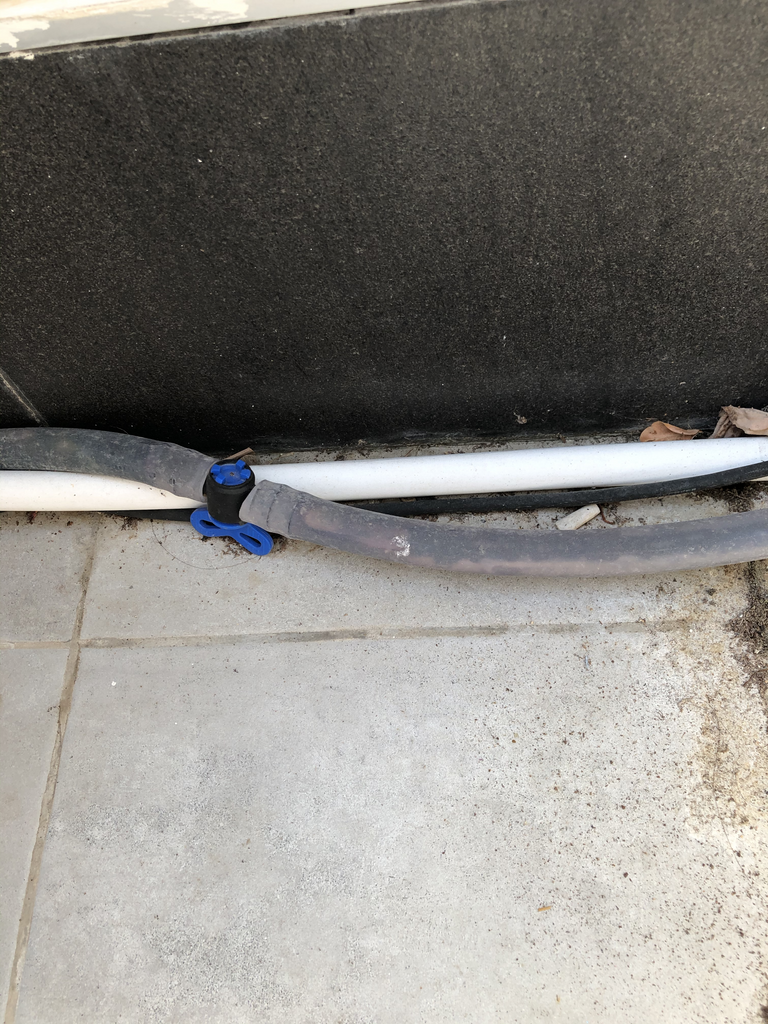
The drip irrigation feed then runs to all my potted plants.
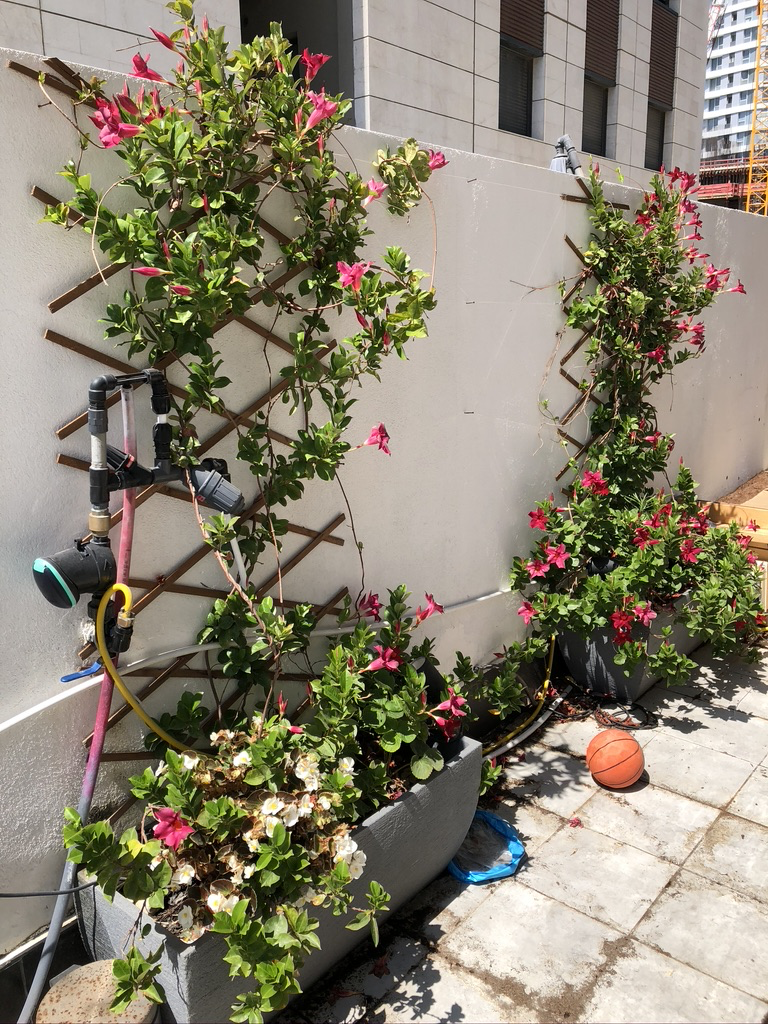
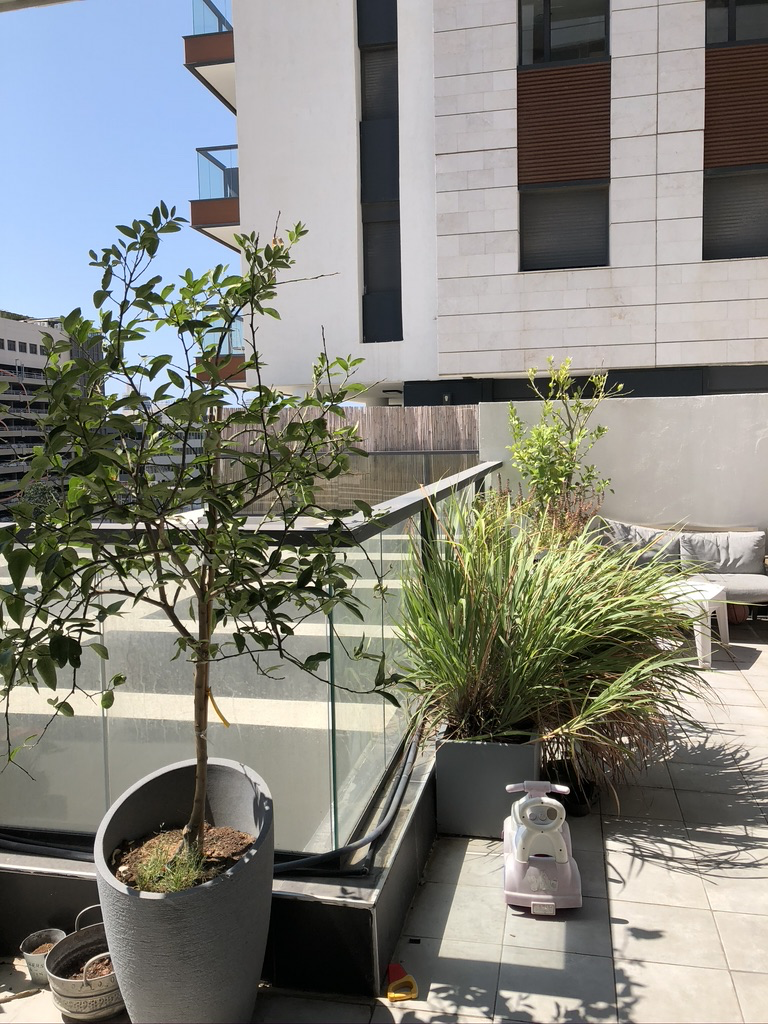
The whole system is working really well and the plants are loving it, as you can see (these plants were planted only 9 to 15 months ago).
I have also recently installed the irrigation feed in my new (soon to be robotic) vegetable garden.

15 months with HomeBioGas - Beautiful, low maintenance, garden, Free Gas and no more Bin Juice!
The Home BioGas System has become an every day part of my family's life and has made it more convenient, saved money and time and made our garden beautiful with minimal maintenance.
Although there is some green algae build up in the clear fertiliser pipe, the feed has never blocked and now with the extra demand from my vegetable garden, the throughput is higher which reduces algae buildup, even in the height of summer.
In most households it is the man's job to empty the rubbish and one of my pet hates was the "Bin Juice" - the way the organic waste in the bin would sometimes leak out of the plastic garbage bag onto the floor as I was taking the garbage out.
Many times I'd have to retrace my steps with a wipe to clean up the mess in our apartment and the common hallway and lift.
This problem has disappeared as ALL our organic waste now goes directly in the Home Biogas. When we eat outside with guests we scrape the plates directly into the Home Biogas and the rest of the time there is a scraps container on our kitchen bench. I empty the scraps into the Home BioGas and wash out the container into the Home Biogas in the same process.
While dealing with the garbage is still my job - I haven't been able to get my wife or teenage daughter to put scraps into the Home BioGas - its much easier than before. I have to empty the kitchen bin less frequently, garbage bags are lighter and don't leak and organic waste disposal is meters from the kitchen.
Did I mention Free Gas!?
So far I haven't even mentioned the cooking gas produced by the system, which is its main advertised purpose.
I have set up the supplied BioGas cooker next to our BBQ and outdoor dining area, with a wind shield to stop the gas blowing out in the quite windy conditions we have in our elevated position.

I use it many times a day to boil water for tea and babies bottles, cook pasta (things that don't require many ingredients to be transported from the kitchen) and do small BBQs on a grill plate.
It produces enough gas for everyday use all throughout the year, although noticeably less in winter.
In summer the gas bladder refills very quickly and is almost always full.
We have not yet plumbed the biogas inside to our kitchen because that will require a new cooktop, lifting floor tiles to run pipes and drilling through walls. We may do this in future, but I enjoy my outdoor man kitchen.
Conclusion & next (robotic) stage
Overall the Home BioGas project has been a complete success, even exceeding expectations in some areas.
The next stage is the addition of an open source gardening robot (Farm.Bot) to my vegetable garden, which will combine the benefits of these two technological marvels to create a complete, low-maintenance, high-efficiency, closed-cycle, urban vegetable garden.
You can see some sneak peaks in yesterday's Man Cave in the Sky post.
Watch this space for more details.
Thanks for sharing your creative and inspirational post on HIVE!
This post got curated by our fellow curator @deepu7 and you received a 100% upvote from our non-profit curation service!
Join the official DIYHub community on HIVE and show us more of your amazing work!
Now this looks very interesting. I'm going to bookmark it and read it in detail tomorrow. From what I can see you seem like a man that is interested in alternatives to the status quo.
You might like this then.
https://www.chocolatescorpion.com/greengold
Love it!
I support genuine efforts at sustainability, especially by tough Aussies in the bush :-)
But I cannot stand virtue signalling faux-environmentalists who swan around on private jets or yachts telling everyone else what to do and behaving hypocritically.
👍
Hypocrites in any way, shape or form infuriate me....
Love it, what a great idea and an easy system. Lucky you to have the easy access to all of the piping from your store though.
If my balcony was big enough, I'd definitely be doing something like this too!
Years ago I designed a commercial sized service like this too- manufacturing and placing partitioned bins into the tens of thousands of flats and apts in Melbourne to collect their organic waste, depositing into a series of underground giant bins to create different gases and fertilizers for use.
Unfortunately I never did anything with it, never told anyone about it (except my ex...) and so absolute nothing every came of it. 😞
And then a small company did exactly the same thing in my home town (in another state), but on a much, MUCH smaller scale, but I come from a small farming town and most people have either their own compost bins or numerous other means of disposing of their organic waste (like chickens...) and the bins that were provided were absolutely tiny anyway- not even large enough for scraps from one meal prep...., so a great idea, but not so well executed or thought out...
And after all, it's not people that live in rural areas that need this, its the millions of people living in apts in the cities that need this and I living in the middle of Melbourne (still) cannot justify and find it completely illogical that we do mix out organic waste in with general rubbish, when everything else is (supposedly...) getting recycled.....